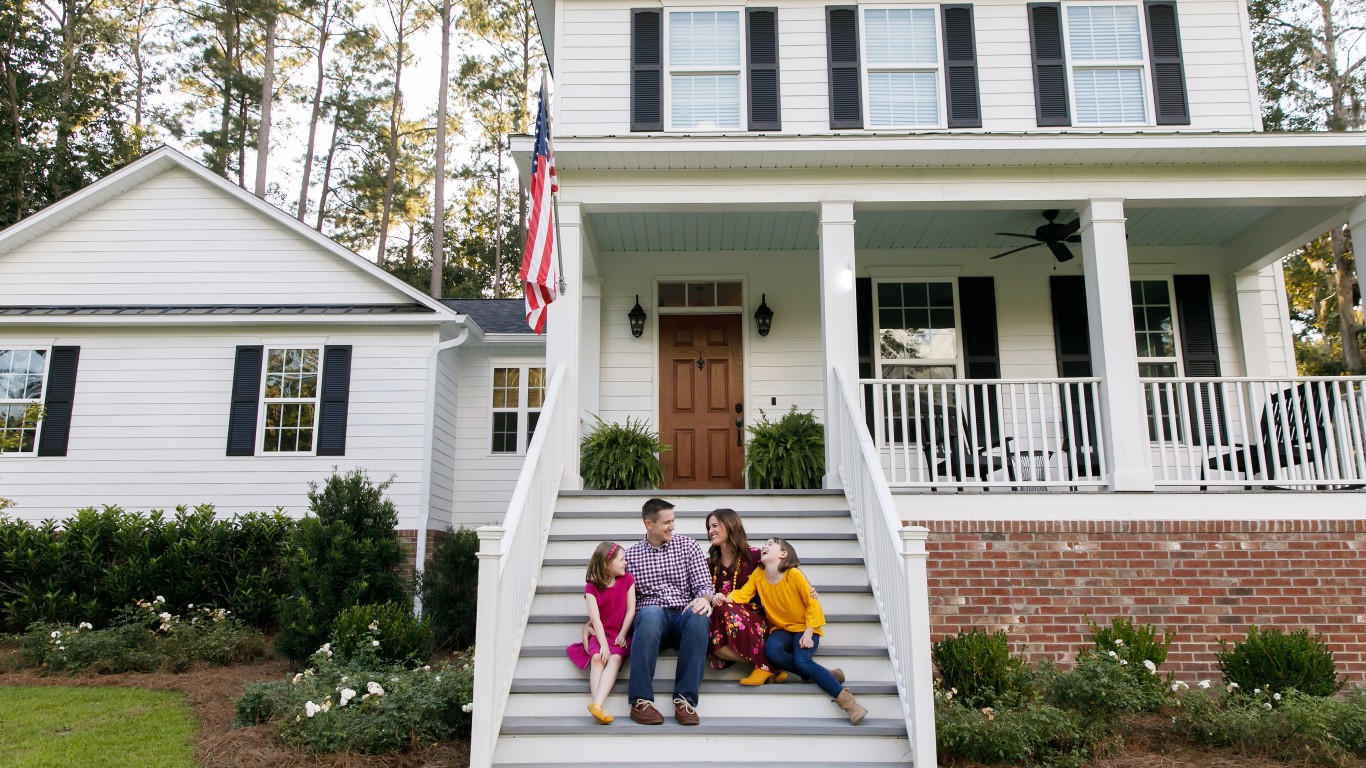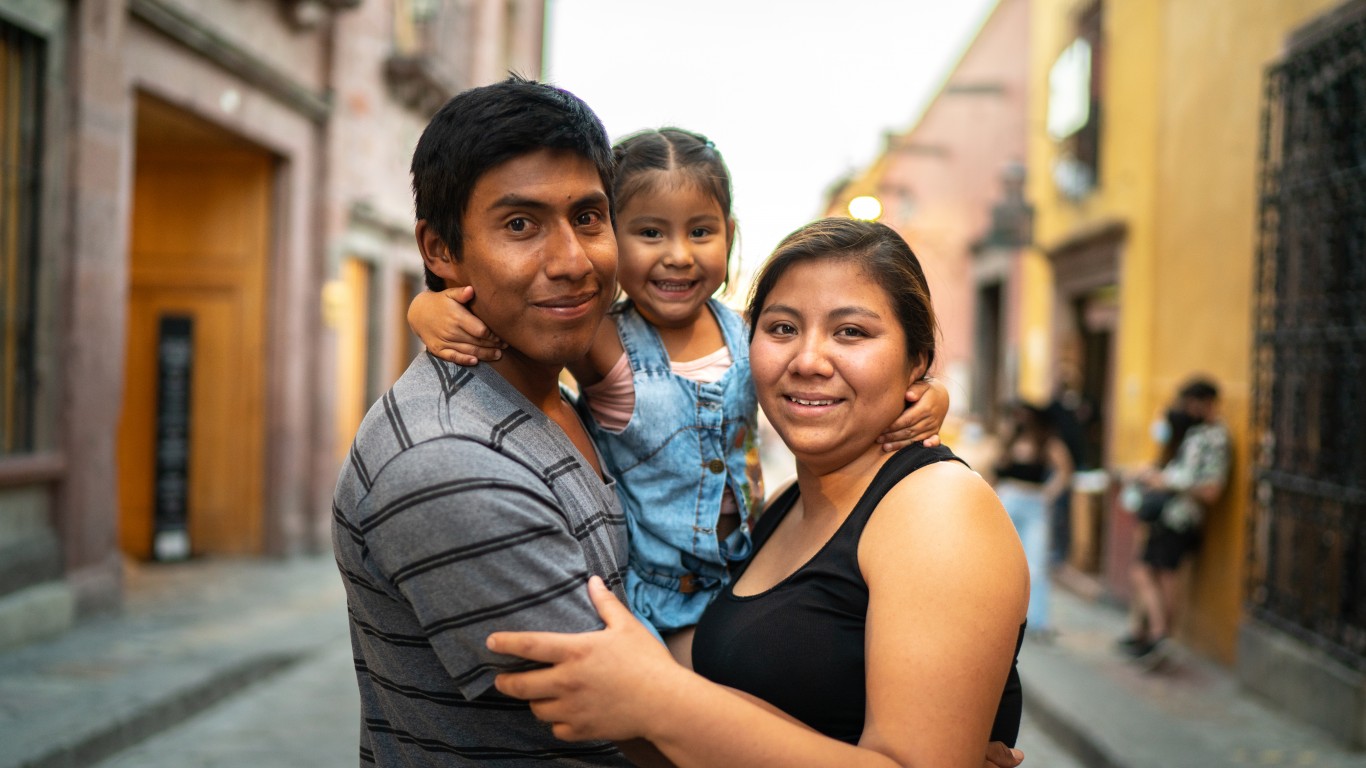
Family size varies greatly from country to country, depending not only on how many children a couple (or a single parent) decides to raise, but also on whether or not extended family members – typically parents or grandchildren – are part of the household.
In general, wealthier countries tend to have smaller family sizes. The average individual in sub-Saharan Africa, for instance, lives in a household of 6.9 people, according to Pew Research. The comparable average in Europe is 3.1. (These are the poorest countries int he world.)
To identify the rich countries with the biggest families, 24/7 Tempo reviewed the Family Database published by the 38-nation Organization for Economic Co-operation and Development. The database breaks down the computations according to couple households with children, single parent households with children, and all households. Our list ranks the 15 countries with the largest mean average number of people for all households.
Note that the time frame for the data is inconsistent among the countries covered. The data is from 2010 for Korea and Mexico (2010); 2011 for Australia, Canada, and Costa Rica; 2013 for New Zealand; 2016 for the U.S.; and 2015 for the remaining eight nations. The percentage of households with zero children also comes from the OECD Family Database and is for the same years, while total population comes from the World Bank World Development Indicators for 2020.
Of the 15 countries on the list, the U.S. has the “smallest” big families with an average of 2.5 people per household. Some 66.6% of households have no children, the second largest percentage after New Zealand at 67.0%.
Click here to see the rich countries with the biggest families
The largest households of the top 15 can be found in Mexico, with an average of about four people in each household. Only 41.3% are childless. Interestingly, it is not among the 25 least expensive countries in which to raise a family.

15. United States
> Avg number of people per household: 2.5
> Households without children: 66.6%
> Population: 331,501,080
[in-text-ad]

14. Australia
> Avg number of people per household: 2.6
> Households without children: 37.8%
> Population: 25,693,267

13. New Zealand
> Avg number of people per household: 2.7 (tie)
> Households without children: 67.0%
> Population: 5,090,200

12. Romania
> Avg number of people per household: 2.7 (tie)
> Households without children: 65.1%
> Population: 19,257,520
[in-text-ad-2]

11. Malta
> Avg number of people per household: 2.7 (tie)
> Households without children: 63.1%
> Population: 515,332

10. Cyprus
> Avg number of people per household: 2.7 (tie)
> Households without children: 61.1%
> Population: 1,207,361
[in-text-ad]

9. Poland
> Avg number of people per household: 2.7 (tie)
> Households without children: 61.6%
> Population: 37,899,070

8. Korea
> Avg number of people per household: 2.7 (tie)
> Households without children: N/A
> Population: 51,836,239

7. Ireland
> Avg number of people per household: 2.7 (tie)
> Households without children: 58.5%
> Population: 4,985,674
[in-text-ad-2]

6. Croatia
> Avg number of people per household: 2.8 (tie)
> Households without children: 64.9%
> Population: 4,047,680

5. Slovak Republic
> Avg number of people per household: 2.8 (tie)
> Households without children: 62.8%
> Population: 5,458,827
[in-text-ad]

4. Israel
> Avg number of people per household: 3.3
> Households without children: N/A
> Population: 9,215,100

3. Costa Rica
> Avg number of people per household: 3.5 (tie)
> Households without children: 30.3%
> Population: 5,094,114

2. Turkey
> Avg number of people per household: 3.5 (tie)
> Households without children: 45.7%
> Population: 84,339,067
[in-text-ad-2]

1. Mexico
> Avg number of people per household: 3.9
> Households without children: 41.3%
> Population: 128,932,753
Are You Still Paying With a Debit Card?
The average American spends $17,274 on debit cards a year, and it’s a HUGE mistake. First, debit cards don’t have the same fraud protections as credit cards. Once your money is gone, it’s gone. But more importantly you can actually get something back from this spending every time you swipe.
Issuers are handing out wild bonuses right now. With some you can earn up to 5% back on every purchase. That’s like getting a 5% discount on everything you buy!
Our top pick is kind of hard to imagine. Not only does it pay up to 5% back, it also includes a $200 cash back reward in the first six months, a 0% intro APR, and…. $0 annual fee. It’s quite literally free money for any one that uses a card regularly. Click here to learn more!
Flywheel Publishing has partnered with CardRatings to provide coverage of credit card products. Flywheel Publishing and CardRatings may receive a commission from card issuers.
Thank you for reading! Have some feedback for us?
Contact the 24/7 Wall St. editorial team.

